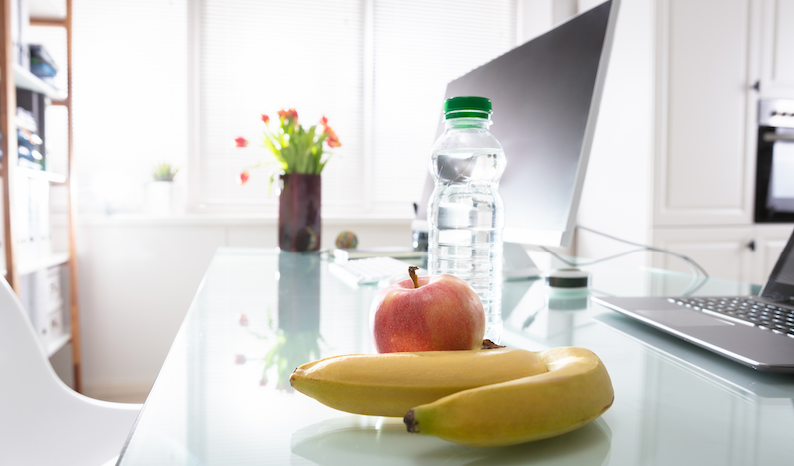Part 3: Wellbeing in practice – develop 3 new workplace habits
- Karen Lewchenko

- Nov 18, 2024
- 4 min read
Updated: Jan 14

Here are some excellent tips that you can genuinely put into practice today. We guarantee that moving towards a healthier work environment will provide immediate benefits for you mentally and physically. None of these requires a financial investment – you just need to give them a chance and, hopefully, they will result in some new life-long (work-long) habits that will serve you well.
Plan your day
ACTION: Set aside some time each day to plan ahead. This might be anything between ten to thirty minutes depending on how detailed you’d like to be. You could start your day by setting out your goals/intentions or you could end your day by planning for the next.
WHY: It’s important that you know what you need to get done so you can prioritise, have a sense of direction and also a sense of achievement. Be realistic as there’s nothing as disheartening as a to-do list that’s never completed. Vitally, it also signals when it’s a good time to stop work for the day. It’s far better to do what you intended and add a couple of quick wins at the end than never to arrive at a satisfactory end to your day’s endeavours!
Include regular breaks
ACTION: Once you know what you need to achieve, carve your time up into useful chunks, setting yourself breaks throughout the day. And before you say you can’t have breaks, you need them and you’ll work better because of them – trust the process!
Your breaks should vary in length and type. The humble process of making a hot drink can be turned into something more meaningful. Enjoy the ritual and associate it with some brief mindfulness – try and switch off from your work whilst you boil the kettle, choose your drink and go through the motions of making it. Take a moment with your drink before resuming work. Other breaks might include lunch, a walk, ten minutes with the crossword or news headlines, a chat with a colleague or time out with a book or a gym session.
WHY: These breaks add variety and depth to our days. They offer a chance to recoup, rest our eyes and mind, and move our bodies from a seated position. A change also allows our subconscious to think things over when we’re doing something different. It’s why we sometimes have our best ideas in the shower when we were least expecting them!
Enjoy a digital detox
ACTION: Close your internet tabs, set your phone to ‘do not disturb’ and turn off email. Try it for an hour and you’ll be amazed at the quality and quantity of work you can achieve. At Just Audit we do this regularly, exclusively focusing on client work and giving it the attention it deserves. If you’re worried about being unavailable, have a clear ‘out of office’ message, voicemail message or other way of communicating when you’ll be back online. We need to break the cycle of always making ourselves available, it’s not healthy or sustainable (despite most of us living like this constantly).
Other ways to have a digital detox include: setting aside areas of your workplace that are no-phone zones; turning off unnecessary app notifications; putting your phone completely away and out of sight during specified times of the day (and night); and ensuring that some of your breaks are screen-free.
In Tanya Goodin’s book ‘Stop Staring at Screens’ she recommends the 20-20-20 technique. This means that for every 20 minutes you are looking at your screen, take 20 seconds to look at something 20 feet away.
WHY: We are all used to being available and responsive all of the time. It creates a fragmented work environment as we have got more and more used to responding instantly to stimulus all around us. For those of us old enough to remember working in pre-digital days it’s bittersweet – we wouldn’t be without the essential and time-saving technology we have now - but it’s interesting (and important) to recognise the constant interruptions we have learned to live with on a daily basis.
Spending time without email alerts, internet distractions and our phones pinging can provide us with the time and space we need to get into a state of hyperfocus to concentrate better and, ironically, achieve more. Time spent in this way is less frenetic and of a far higher quality than time that is constantly interrupted. We’ve got so used to living like that we no longer see it.
In summary, there are a few things we can do – or do more of – to benefit our mental and physical wellbeing. Ideally we should be creating new habits so we revert to better ways of working automatically and comfortably. Maybe start by doing what suits you and the shape of your day, looking to improve wherever you can. Make the lists, have some breaks and switch off!
Karen’s takeaways…
Plan – know what you need to do each day, week and month so you know where you’re going and when you’ve arrived.
Break – take breaks, they’re nourishing and essential, both mentally and physically.
Detox – scheduled time away from the constant beeps and calls on your time will make you less stressed and more effective.






Comments